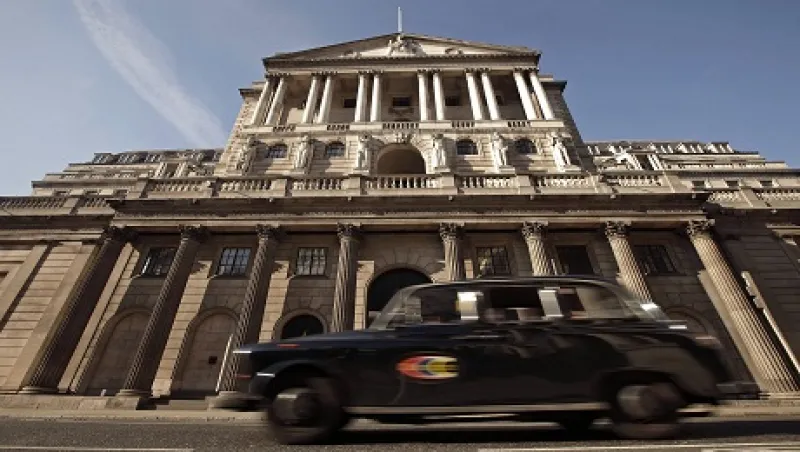Does the state of the British economy justify the safe-haven status of the government gilt market?
The official output data has recently been enough to confuse and worry even the most stout-hearted. It has suggested that the U.K. slumped into double-dip recession at the end of last year, before abruptly recovering to grow at the breakneck speed of 1 percent quarter-over-quarter from July to September — the fastest rate in five years.
This stop-start picture is not reassuring. Growth is key to the credibility of ambitious government plans to close the fiscal deficit. However, even after spectacular third-quarter figures boosted by the London Summer Olympics, the official statistics show the U.K. economy slightly smaller than a year ago.
Hope springs from mistrust: Analysts argue that it has become increasingly dangerous to rely on U.K. gross domestic product (GDP) numbers. Research by private-sector economists suggests that having published the figures for each quarter earlier than most other leading economies, the U.K. authorities are then forced to spend much of their time disowning their original off-the-mark estimates — with an average revision of about 0.4 percentage points for each figure, measured from first to latest assessment. Many economists believe that future reassessments of this order will revise away the recent recession into oblivion. Defenders might argue that the initial estimate of GDP data is only meant to be the first rough draft of economic history, but it has been a very rough first draft indeed — no better than doggerel to its critics.
Disillusioned by the official output data, U.K. economists have this year increasingly resorted to alternatives. Taking the labor market figures, which are generally revised far less radically, the employment rate has grown by almost a percentage point over the past year, pushing up the total number of people in work to a record high of 29.59 million. Growth in tax revenue has been stronger than one would expect during a return to recession, including chunky increases in value-added tax, the main consumption tax.
The relatively optimistic interpretation of the conflicting mass of recent numbers, based on jobs and tax, is probably the correct one, think many economists. It indicates that the U.K. has continued to grow at a sluggish pace throughout the year, despite some weak sectors — notably manufacturing, with Thursday figures from manufacturing purchasing managers showing a further month of decline in October.
This slow overall growth is, however, far from brilliant news. It suggests merely that the U.K. economy has not quite yet veered off the road into crisis territory, less than halfway through its journey to zero deficit — the ultimate aim of the Conservative-Liberal Democrat coalition government. The International Monetary Fund (IMF) suggests that the cyclically adjusted balance will fall from a canyonesque 8.5 percent in 2010, the year the coalition came to power, to a still gaping wide 5.4 percent of GDP this year. The figures are arrived at by using the U.K. government’s preferred measure, which adjusts for the economic cycle.
Not only is there still a long way to travel. Research published by the IMF in October ignited a quiet explosion among economists by suggesting that the uphill gradient may be considerably steeper than previously thought, for countries travelling down the same fiscal road as the U.K. Basing its research on recent austerity programs, the IMF suggests that the fiscal multiplier in advanced economies may, at between 0.9 and 1.7, be much higher than its earlier assumption of 0.5. Translated into everyday language, this means that a reduction in public spending or increase in tax of 1 percent of GDP may reduce GDP growth by as much as 1.7 percent — creating a considerably more vicious circle of government austerity and economic slump than first assumed.
Given the volatility of U.K. economic growth, a mistrust of the basic numbers used to calculate whether the economy is in crisis, and new doubts about the likelihood that sharp and prolonged fiscal tightening can succeed, it is reassuring to note that the gilt market has this year responded with an impressive show of British stiff upper lip. Earlier in 2012 the yield on 10-year gilts reached a record low of 1.41 percent; at the close of trading on Thursday it was 1.87 percent — far below yields for several euro zone countries predicted to have lower deficits this year, including Italy and Spain. Key to the relaxed state of gilts is the realization that the Bank of England can for many years continue to act as the buyer of last resort for U.K. government debt, whereas the European Central Bank will not.
Episode One of the credit crunch — the collapse in markets following the crash of Lehman, AIG and other players — taught several more or less well-remembered lessons to institutional investors, such as the fact that in times of crisis, seemingly greatly disparate markets tend to fall in unison.
Episode Two — the long period of low growth as governments try to run down debts and deficits caused by Episode One — is teaching investors a few quite fresh lessons too, including two particularly relevant for sovereign debt markets. One is that fiscal multipliers are probably larger than we thought. Another lesson — which can be drawn from the U.S. as well as the U.K. — is that even when conventional monetary policy is exhausted, even when there is no room for fiscal easing and even when the state of the economy is uninspiring, central banks can still intervene over long periods to keep the ship of state, funded by the bond markets, afloat.






